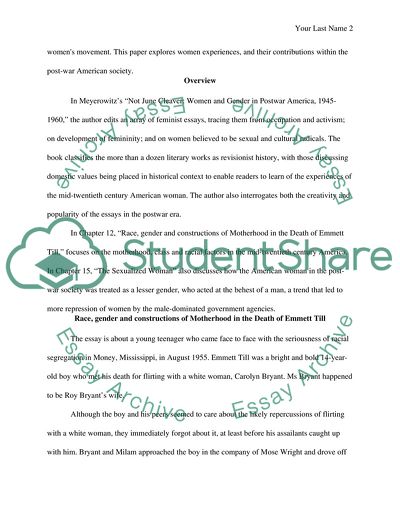Cite this document
(Women and Gender in Postwar America Book Report/Review Example | Topics and Well Written Essays - 1750 words - 1, n.d.)
Women and Gender in Postwar America Book Report/Review Example | Topics and Well Written Essays - 1750 words - 1. https://studentshare.org/history/1795115-not-june-cleaver
Women and Gender in Postwar America Book Report/Review Example | Topics and Well Written Essays - 1750 words - 1. https://studentshare.org/history/1795115-not-june-cleaver
(Women and Gender in Postwar America Book Report/Review Example | Topics and Well Written Essays - 1750 Words - 1)
Women and Gender in Postwar America Book Report/Review Example | Topics and Well Written Essays - 1750 Words - 1. https://studentshare.org/history/1795115-not-june-cleaver.
Women and Gender in Postwar America Book Report/Review Example | Topics and Well Written Essays - 1750 Words - 1. https://studentshare.org/history/1795115-not-june-cleaver.
“Women and Gender in Postwar America Book Report/Review Example | Topics and Well Written Essays - 1750 Words - 1”. https://studentshare.org/history/1795115-not-june-cleaver.


